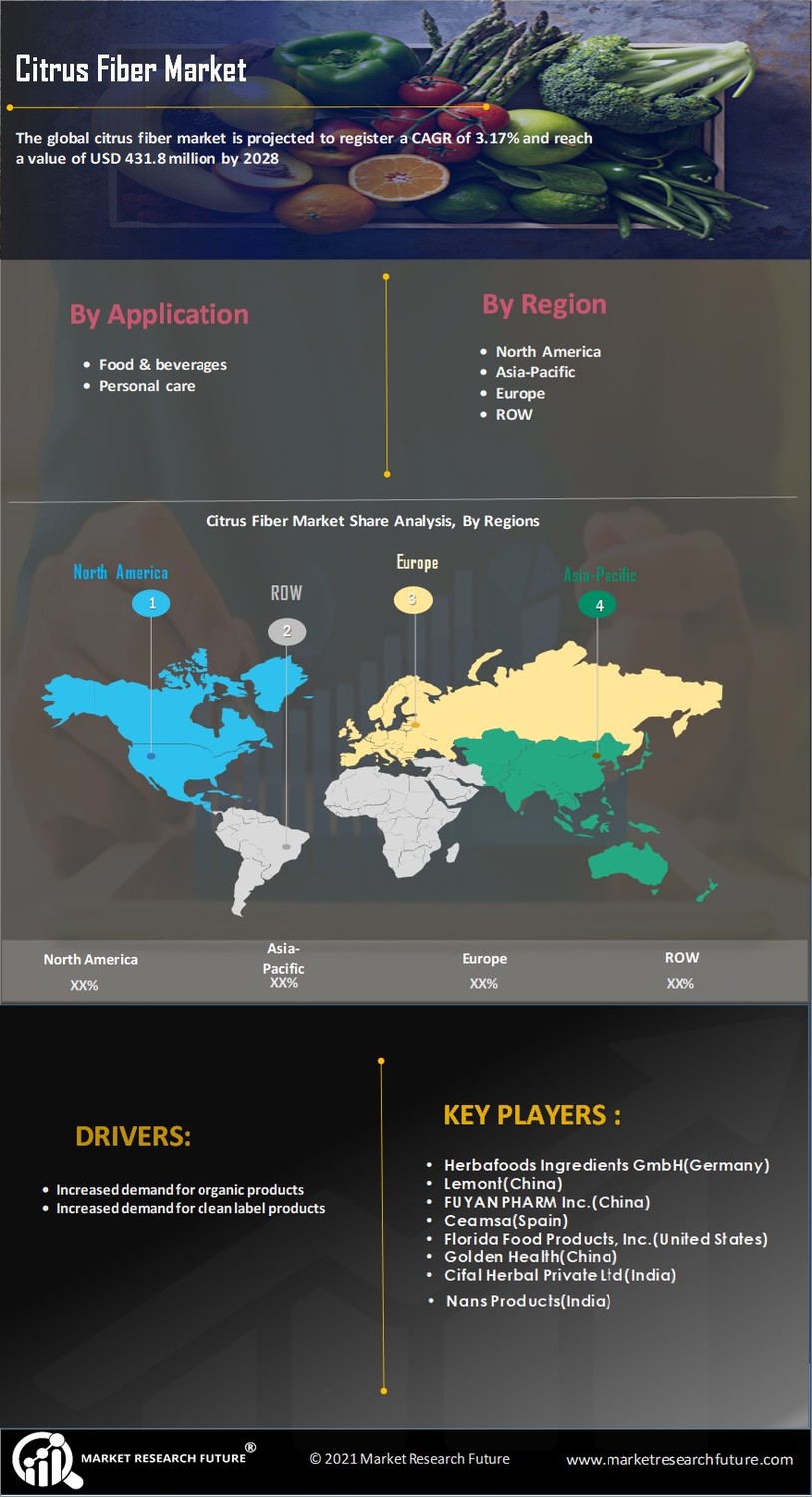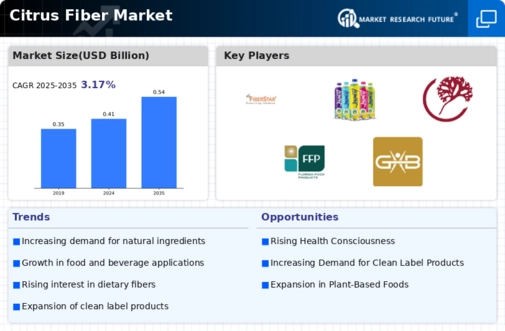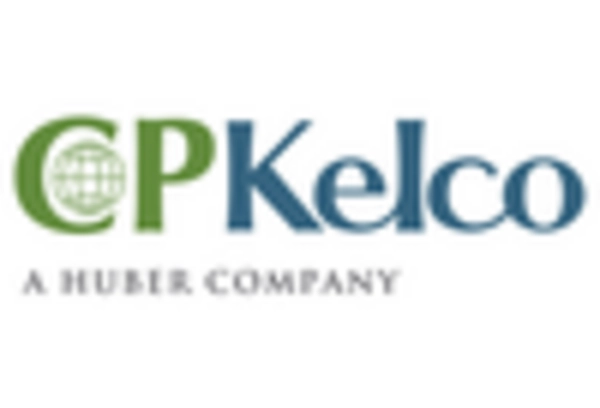Rising Demand for Natural Ingredients
The Citrus Fiber Market is experiencing a notable increase in demand for natural ingredients, driven by consumer preferences for clean label products. As health-conscious consumers seek alternatives to synthetic additives, citrus fiber emerges as a favorable option due to its natural origin and functional benefits. The market for natural food additives is projected to grow significantly, with citrus fiber playing a crucial role in this trend. This shift towards natural ingredients not only enhances product appeal but also aligns with the broader movement towards healthier eating habits. Consequently, manufacturers are increasingly incorporating citrus fiber into various food products, thereby expanding its application range and boosting the Citrus Fiber Market.
Expansion of Food and Beverage Applications
The Citrus Fiber Market is witnessing an expansion in its applications within the food and beverage sector. Citrus fiber is being utilized in a variety of products, including baked goods, dairy alternatives, and beverages, due to its functional properties such as emulsification and stabilization. The versatility of citrus fiber allows it to enhance texture and improve moisture retention, making it an attractive ingredient for manufacturers. Recent market analysis indicates that the food and beverage industry is one of the largest consumers of citrus fiber, contributing significantly to the overall growth of the Citrus Fiber Market. This trend suggests a promising future for citrus fiber as it continues to find new applications across diverse product categories.
Growing Awareness of Dietary Fiber Benefits
The Citrus Fiber Market is benefiting from the growing awareness surrounding the health benefits of dietary fiber. As consumers become more informed about the importance of fiber in their diets, the demand for fiber-rich products is on the rise. Citrus fiber, known for its high soluble fiber content, is being recognized for its potential to aid digestion and promote gut health. According to recent data, the dietary fiber market is expected to witness substantial growth, with citrus fiber being a key contributor. This increasing focus on health and nutrition is prompting food manufacturers to enhance their product formulations with citrus fiber, thereby driving growth in the Citrus Fiber Market.
Sustainability and Waste Reduction Initiatives
The Citrus Fiber Market is also being driven by sustainability and waste reduction initiatives. As the food industry increasingly focuses on minimizing waste, citrus fiber, derived from by-products of citrus fruit processing, presents a viable solution. Utilizing citrus peels and pulp not only reduces waste but also adds value to the supply chain. This trend aligns with the growing consumer demand for sustainable products, prompting manufacturers to explore innovative ways to incorporate citrus fiber into their offerings. The emphasis on sustainability is likely to enhance the appeal of citrus fiber, thereby contributing to the growth of the Citrus Fiber Market as companies strive to meet both environmental and consumer expectations.
Increased Regulatory Support for Clean Label Products
The Citrus Fiber Market is positively influenced by increased regulatory support for clean label products. Governments and regulatory bodies are promoting transparency in food labeling, encouraging manufacturers to disclose ingredient sources and formulations. This regulatory environment is fostering a shift towards natural and minimally processed ingredients, including citrus fiber. As a result, food companies are more inclined to adopt citrus fiber in their formulations to meet consumer expectations for clean labels. The alignment of regulatory frameworks with consumer preferences is likely to propel the growth of the Citrus Fiber Market, as manufacturers seek to comply with these standards while enhancing product quality.


















Leave a Comment